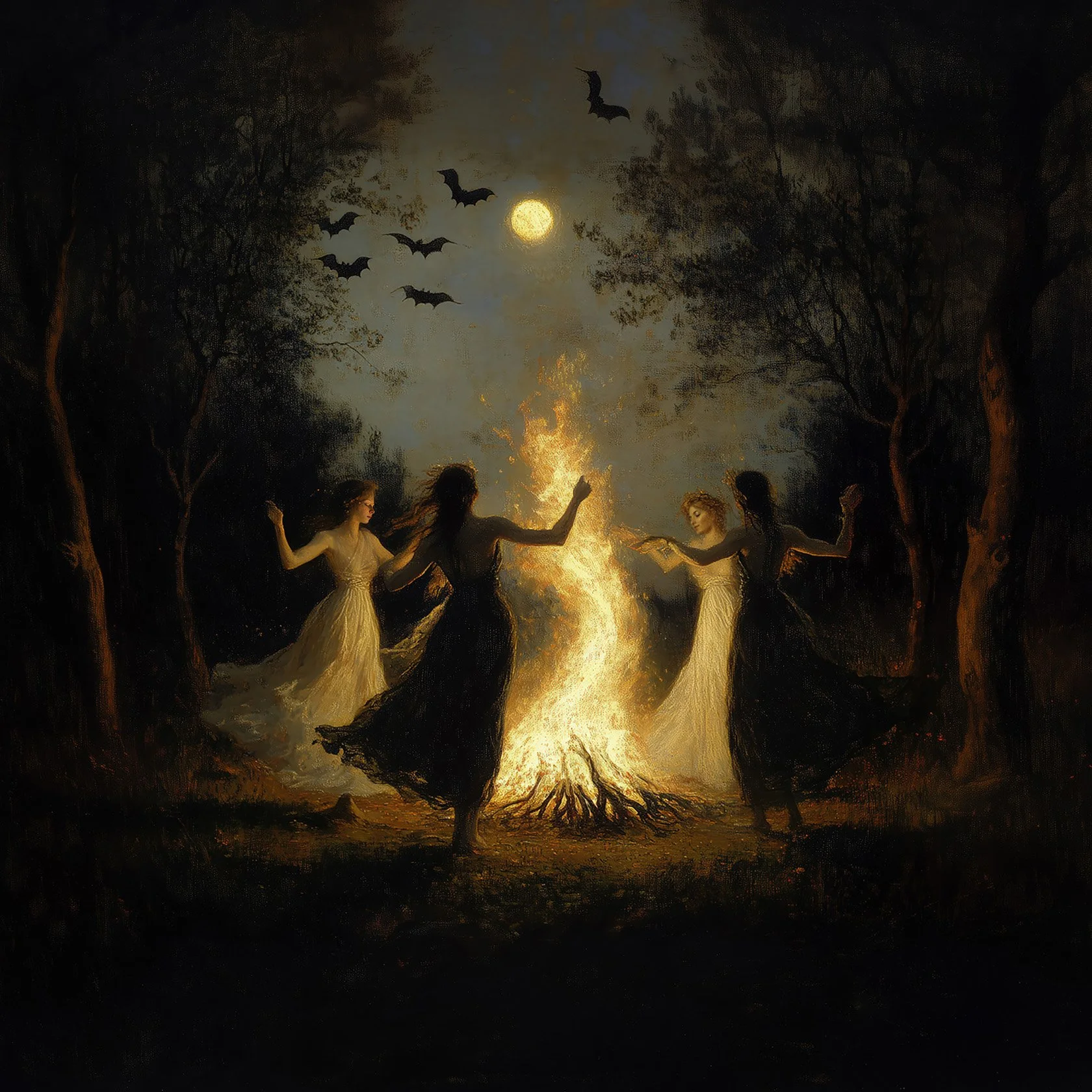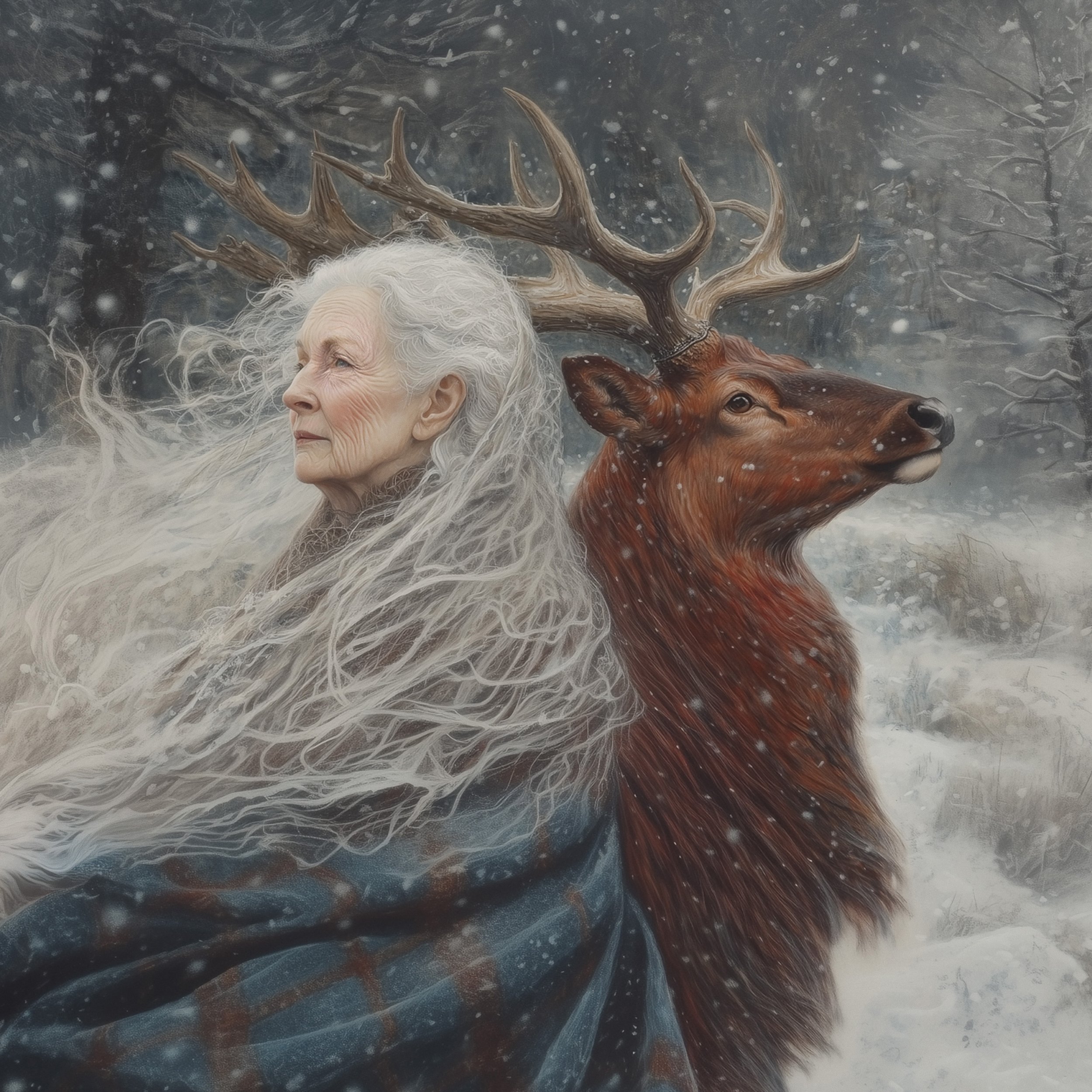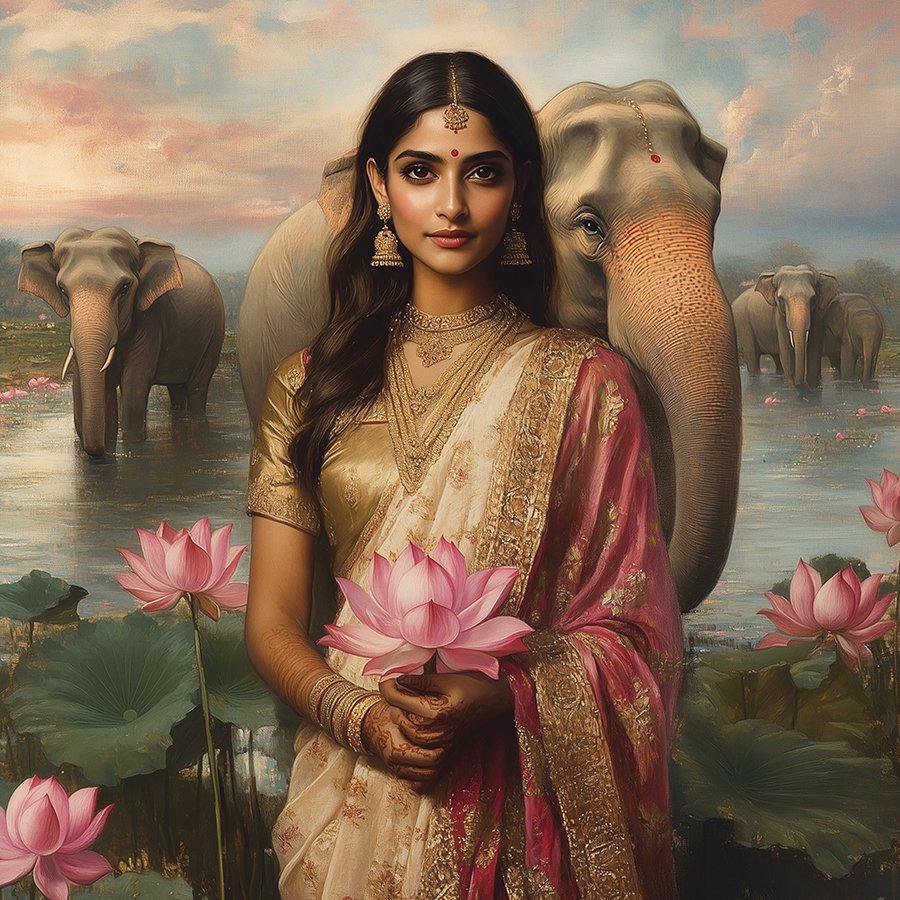Changing Woman
Changing Woman, or Asdzáán Nádleehi, is one of the most beloved figures in Navajo tradition, a Holy Person whose very being embodies the rhythm of transformation. She is the renewal of the land, the shifting of the seasons, and the quiet strength of the Motherline that has carried families and culture through time. Her stories move between worlds, origin, ceremony, creation, and each one shows another way that life can age, return to youth, and begin again.
Samhain
Halloween, a beloved holiday marked by costumes, candy, and eerie decorations, has a rich and multi-cultural history. It traces back to the Celtic festival of Samhain, celebrating the end of harvest and the thinning of the veil between the living and the dead. As Roman and Christian traditions merged with Samhain, the holiday evolved into All Hallows' Eve, eventually becoming Halloween. In America, it transformed further with the blend of various immigrant traditions, giving rise to the modern celebration we cherish today.
Baba Yaga
Deep within the heart of Eastern European forests lies Baba Yaga, a figure whose eerie mystique has captivated generations. As a prominent example of the Crone archetype in Slavic folklore, Baba Yaga embodies the untamed beauty and inherent danger of the wilderness. Described as an elderly woman with iron teeth and wild, iron-gray hair, she commands fear and respect with her penetrating gaze and metal-clinking voice. Her attire, consisting of tattered rags, and her gnarled staff reflect her deep connection to the forest, while her hut on giant chicken legs adds a surreal, terrifying aspect to her domain, showcasing her role as guardian of the liminal space between life and death.
Oshun
Oshun is a revered goddess within the Yoruba pantheon, embodying love, beauty, fertility, and abundance. Created by the high god Olorun to infuse the world with joy and life, Oshun is celebrated for her grace and compassion, acting as a protector of women, children, and the elderly. She holds dominion over rivers and waterways, symbolizing prosperity and the fertile land nurtured by these waters. Her worship persists in Yoruba traditions and the African diaspora through vibrant rituals, music, and dance, sustaining her legacy as a potent symbol of nurturing and life.
Ma’at
Ma’at’s is one of the more enigmatic deities in Egyptian mythology. She isn’t just a goddess she is the embodiment of truth, justice, balance, and cosmic order. Her presence kept chaos at bay and offered a path to harmony. In an age overwhelmed by noise, imbalance, and distortion, Ma’at speaks through conscience, reminding us that true justice is rooted in integrity and that the foundation of order is always internal.
Ishtar/Inanna
Originating in ancient Mesopotamia, Inanna, also known as Ishtar, embodies love, fertility, war, and the cycle of creation and destruction. As Queen of Heaven and Earth, she reflects both fierce power and deep vulnerability. Her descent into the Underworld symbolizes profound transformation.
Ostara
Rooted in ancient Germanic traditions, this festival honors the goddess Eostre, whose symbols of hares and eggs herald fertility and rebirth. Marking the vernal equinox, Ostara invites us to embrace the equilibrium of light and dark, sow seeds of intention, and awaken to the blossoming potential within and around us.
The Cailleach
In the heart of Winter, the Cailleach emerges as the ancient goddess of storms and transformation. Her presence reminds us of the power in stillness and the wisdom found in the cycles of nature, urging us to honor the quiet depths before the return of Spring.
The History of New Years Resolutions
Tracing back to ancient civilizations, the tradition of setting New Year’s resolutions reflects humanity’s enduring desire for renewal and self-improvement. This exploration delves into the origins and evolution of this practice, highlighting its spiritual significance.
Sedna
In the depths of Arctic waters, Sedna reigns as the resilient sea goddess of Inuit mythology. Her tale of betrayal and transformation speaks to the cycles of loss and rebirth. As winter’s stillness envelops us, Sedna’s story reminds us of the strength found in surrender and the power that emerges from embracing our deepest wounds.
Hera
Hera, the revered queen of the Olympian gods, embodies sovereignty, commitment, and the complexities of partnership. Often overshadowed by tales of jealousy, her narrative invites a deeper exploration of divine feminine power and the sacredness of vows. Through her, we examine the balance between autonomy and union.
Sekhmet
My rekindled love for mythology was ignited by Sekhmet, the ancient Egyptian goddess of the scorching desert sun, plague, chaos, war, and healing. Her dual nature reflects the balance between creation and destruction, making her a profound figure in both ancient rituals and modern interpretations.
Artemis
Artemis, the Greek goddess of the hunt, wilderness, childbirth, and virginity, emerges as a formidable and influential figure, with origins in pre-Greek cultures of Asia Minor. Her association with the moon and her role in fertility and healing underline her spiritual significance, while her influence extends to modern Pagan and feminist movements, symbolizing female strength and autonomy.
Spider Woman | Asibikaashi
Spider Woman, or Asibikaashi, weaves the web of life, connecting all beings in a sacred tapestry. Her stories teach us about creation, protection, and the importance of interconnectedness. Through her, we learn to navigate the threads of our own lives with intention and care.

















